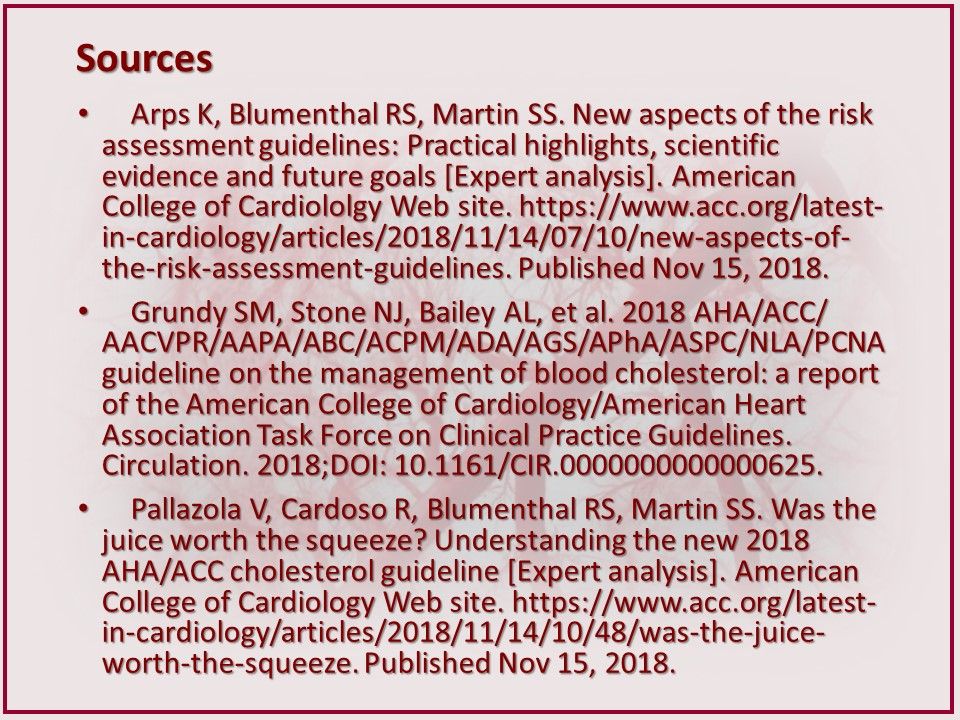© 2025 MJH Life Sciences™ , Patient Care Online – Primary Care News and Clinical Resources. All rights reserved.
AHA/ACC 2018 Guidelines on Treatment of Blood Cholesterol: Quiz #2
How will changes in the AHA/ACC update to the 2013 guidelines help optimize care for patients with ASCVD? Try part 2 of our 3-part quiz and find out.

1. Which of the above would be the next appropriate therapeutic step for a patient aged 50 years who recently had a second heart attack, has hypertension, and is found to have a nonfasting LDL-C of 100 mg/dL on high-intensity statin therapy plus ezetimibe after >3 months of therapy?
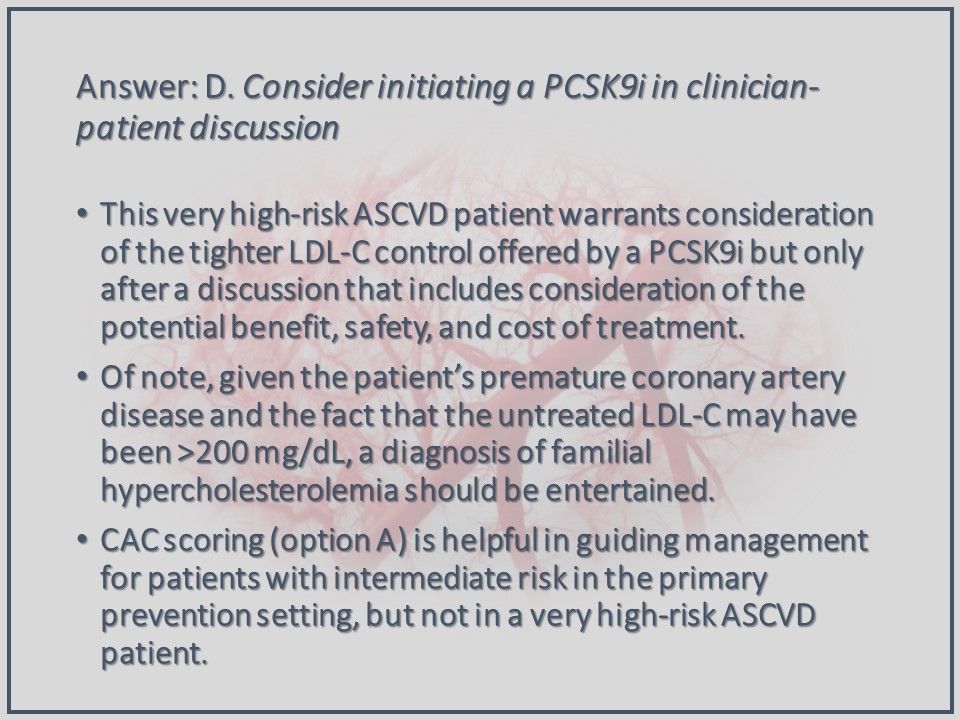
Answer: D. Consider initiating a PCSK9i after a discussion with the patient. This very high-risk ASCVD patient warrants consideration of the tighter LDL-C control offered by a PCSK9i but only after a discussion that includes consideration of the potential benefit, safety, and cost of treatment.

Of note, given the patient’s premature coronary artery disease and the fact that the untreated LDL-C may have been >200 mg/dL, a diagnosis of familial hypercholesterolemia should be entertained.
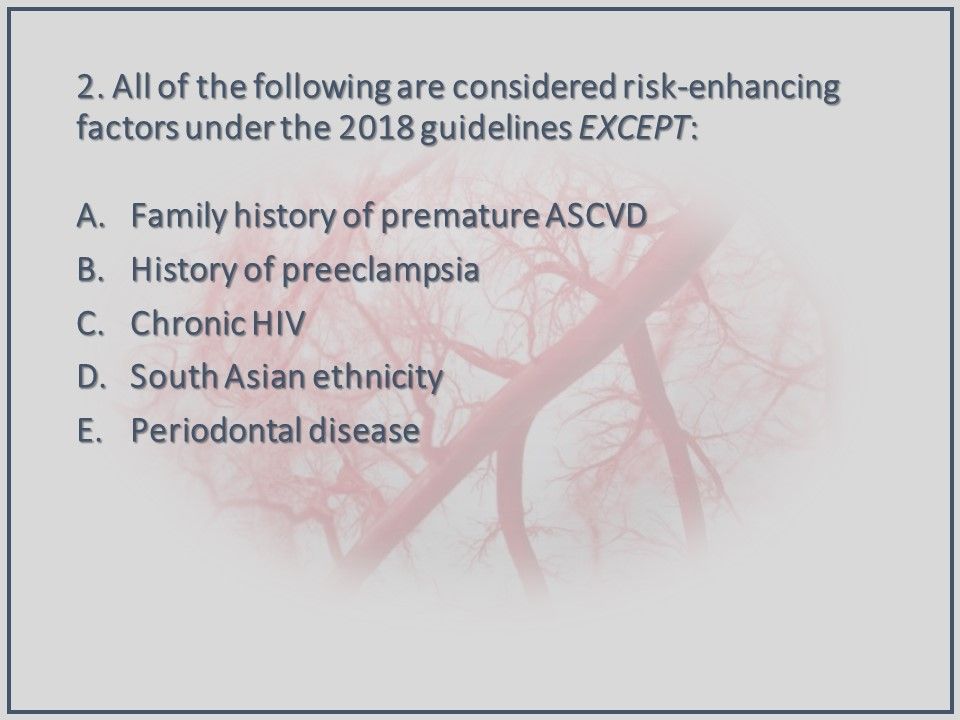
2. Which one of the above is NOT considered considered a risk-enhancing factor under the 2018 AHA/ACC guidelines?
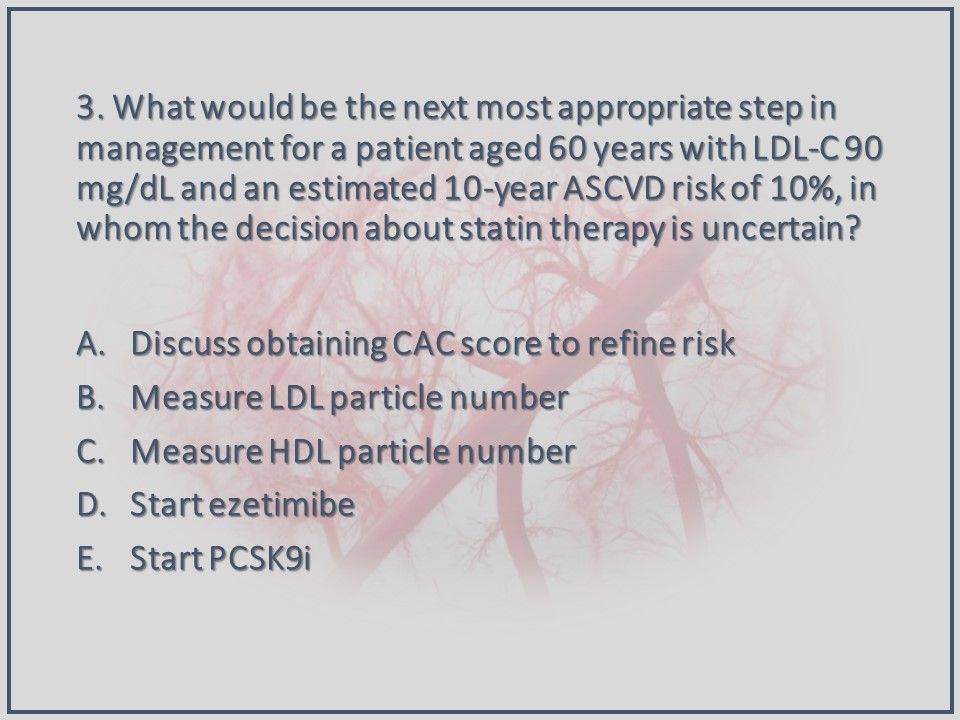
3. What would be the next most appropriate step in management for a patient aged 60 years with LDL-C 90 mg/dL and an estimated 10-year ASCVD risk of 10%, in whom the decision about statin therapy is uncertain?
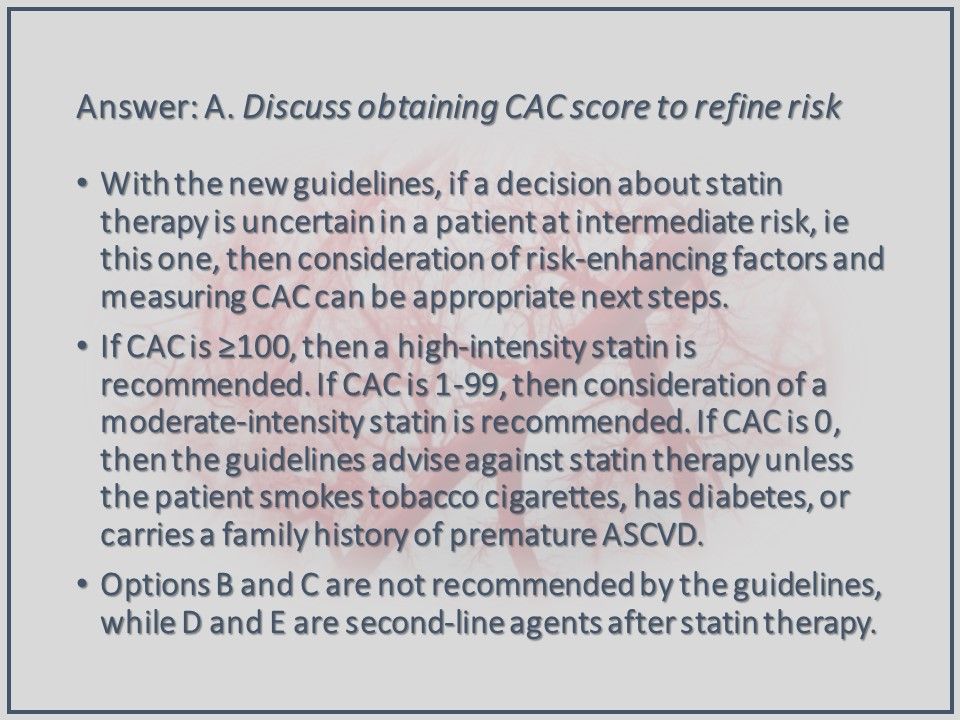
Answer: A. Discuss obtaining CAC score to refine risk. If a decision about statin therapy is uncertain in a patient at intermediate ASCVD risk a review of risk-enhancing factors and measuring CAC may be appropriate. Per the 2018 AHA/ACC guidelines, if CAC is: ≥100, then a high-intensity statin is recommended; 1-99, then consideration of a moderate-intensity statin is recommended; if CAC = 0 then the guidelines advise against statin therapy unless the patient smokes tobacco cigarettes, has diabetes, or carries a family history of premature ASCVD.
For parts I and III of the AHA/ACC lipid guidelines quiz:
Click here to take Quiz #1 Click here to take Quiz #3
Good luck on Quiz #2. If you missed Quiz #1, you'll find a link at the end of this quiz as well as a link to the final, Quiz #3.



